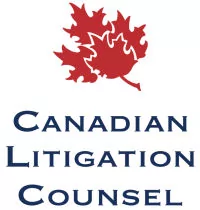Case citation: Simmons v Homes by Avi (Edmonton) GP Inc, 2023 ABKB 218
Recent developments in Alberta suggest the limitation period can begin before the injury has occurred. The Plaintiff brought an action against Homes by Avi, the Defendant, for personal injuries resulting from a slip and fall on her own property on December 6, 2018. The lawsuit alleges bad design and grading. However, despite the Plaintiff's claims of negligence and breach of duty, the Court ultimately dismissed the Plaintiff's action as the circumstances (bad design and grading) leading to the incident had existed for six years, well beyond the two-year limitation period to bring an action.
The Plaintiff took possession of a home constructed by Homes by Avi in July 2015, with a new home warranty that commenced the same day. The backyard had a trough-like depression between the house and backyard. The Plaintiff's civil engineering expert report highlighted the steep grade of the walkway's slope, emphasizing its failure to meet construction safety standards.
Prior to the December 2018 fall, there were multiple instances of the Plaintiff falling on her property due to the steep slope design. After her first two falls in the winter of 2015/16, the Plaintiff emailed the warranty coordinator of Homes by Avi:
"I fell 2x last winter ... so ... who do I sue ... I guess the City, probably ... but I feel there should be more thought in the design of the backyard from Homes by Avi ..."
The following winter, Plaintiff fell three more times and again wrote to the warranty coordinator:
"Unfortunately, I fell 3 times last winter as the slope to get to the garage is absolutely ridiculous. Thank goodness I did not sprain or break anything. I asked Homes by Avi to look at this last year to come up with a solution. The summer months are tolerable but the winter months are not. Please let me know what can be done."
The most significant incident, which lead to this action, took place on December 6, 2018. While the Plaintiff claims no injuries resulted from the preceding falls, she argues that the defective design and grading constituted an injury in the context of the lawsuit.
The Court discussion centers on the interpretation of the term "injury". The Limitations Act1 (the "Act") defines injury as: personal injury, property damage, economic loss, non-performance of an obligation, or in the absence of the aforementioned, the breach of a duty. The Plaintiff asserts that her claim is for personal injury stemming from the December 2018 fall and, as such, falls within the statutory time limit as set out in the Act. However, the Court held that the true "injury" in this case is the bad design and grading that led to the falls, being the non-performance of a contractual obligation or breach of a duty.
The Court reasons that even though there was a personal injury, the essence of the lawsuit is centered around the conditions that gave rise to these injuries, being the bad design and grading. The Plaintiff was aware of these conditions since October 2015. The Plaintiff's emails to the warranty coordinator indicate she was also aware of having to sue someone well before the December 2018 slip and fall that prompted this action. This highlights the value of having clear records of inspections, assessments, and any communication regarding potential hazards. Timely responses to homeowner concerns, especially those related to safety hazards, can be crucial in demonstrating a proactive approach and mitigating liability.
The Court ultimately finds that the action is statute-barred as all elements necessary for a claim were present well before the relevant date. The action was dismissed. This case serves as a reminder that delaying remedial efforts could potentially lead to liability, especially if a hazard later results in personal injury or property damage.
Footnote
1. Limitations Act, RSA 2000, c L-12
* * *
Brownlee LLP is a member of the Canadian Litigation Counsel, a nationwide affiliation of independent law firms .
The content of this article is intended to provide a general guide to the subject matter. Specialist advice should be sought about your specific circumstances.

